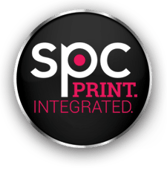Makers and Printers
Do you consider yourself to be a creative and/or crafty person? Has anyone ever referred to you as a “maker?” Well, don’t be offended, it’s not an insult, and you’re not alone! Innovations in technology, as well as other factors, have led to a growing number of people who would prefer to make something themselves, rather than buy it.
This do-it-yourself attitude is actually very common amongst millennials, which perhaps has something to do with their upbringing and education. A lot of young adults grew up with working parents who had less time to teach them skills at home than previous generations did, and most were not required to take domestic and creative education courses, such as Home Ec. and Shop, during high school. As a result, many millennials grew up lacking life skills that former generations viewed as crucial, such as cooking and sewing. This is why, if you were to check the online search history of a millennial, you might find a wide variety of recipe websites and how-to tutorials.
Although millennials are about as obsessed with tech as the stereotypes make them out to be, this is actually assisting the rise of the “Maker Movement,” rather than hindering it. People are using tech to teach themselves how to make things, how to actually manufacture some of these items, and how to sell them.
If you have any tie to the Maker Movement, then you may know that another branch of technology which has been greatly assisting the maker community is printing. The obvious connection here is the use of personal 3D printers. The rise of digital printing, however, also plays a role.
Digital printing, versus the more traditional offset printing, makes it possible to run a small job without breaking the bank. This is because it requires a minimal amount of setup time and materials. Sometimes digital printing gets a bad rep because during the method’s early years the quality it produced wasn’t up to par with what an offset printing press could do. Thanks to advances in technology, however, those days are long gone.
Plus, digital printing is perfect for projects that require the use of variable data. Variable data printing allows type and images to change on each unique print, creating more personalized products. The ability to make one print or 1,000 with the same machine, for a decent price, is part of what made digital printing a game changer. Running a print project for a small business, or even an individual, is no longer unheard of!
There are all kinds of print projects that entrepreneurs might need assistance with, from promotional materials to print collateral that’s part of the finished DIY product. Some of these things can probably be done with a laptop and a home printer, but if you’re looking to appear professional in order to grow your business, you might want to reach out to people with experience and equipment. If you’re a maker looking to enlist the help of a print service provider, here are a few tips…
- Do Your Homework: Choose a company who has the right equipment for what you want to accomplish. As a maker, you’ll probably be working on relatively small projects, so make sure digital printing is a service that the provider offers. Digital presses vary in what they can do, but if you’re aware of what your project requires, then you’ll be able to do the research and find the right print partner to help you get it done.
- Know What You Want and Ask for It: This could seem forward to you, but it actually helps print service providers to know exactly what you’re looking for. It will help them figure out what parts of your budget you’re willing to trim, and which parts you’re not.
- Create a Style Guide: Consistently using the same fonts, colors, and materials will make your products easily recognizable and will allow you to stand out against the sea of other makers. Once you set these standards for yourself, make sure you can clearly relay this information to anyone else who is helping you, like your print service provider.
- Communicate and Question: Once you’ve figured out most of the details surrounding a print project, contact your print service provider immediately. The earlier you run things past them, the more time they’ll have to problem-shoot and stay in line with your goals (aka the closer you’ll stay to your budget!). Answer any questions they have in a timely manner, and don’t be afraid to ask your own!
The size of your business doesn't matter, you and your customers deserve professional quality print collateral. Even in the wide world of DIY, sometimes it's best to seek assistance. There are printing professionals out there who are ready to take your entrepreneurial venture to the next level!






Leave a Reply